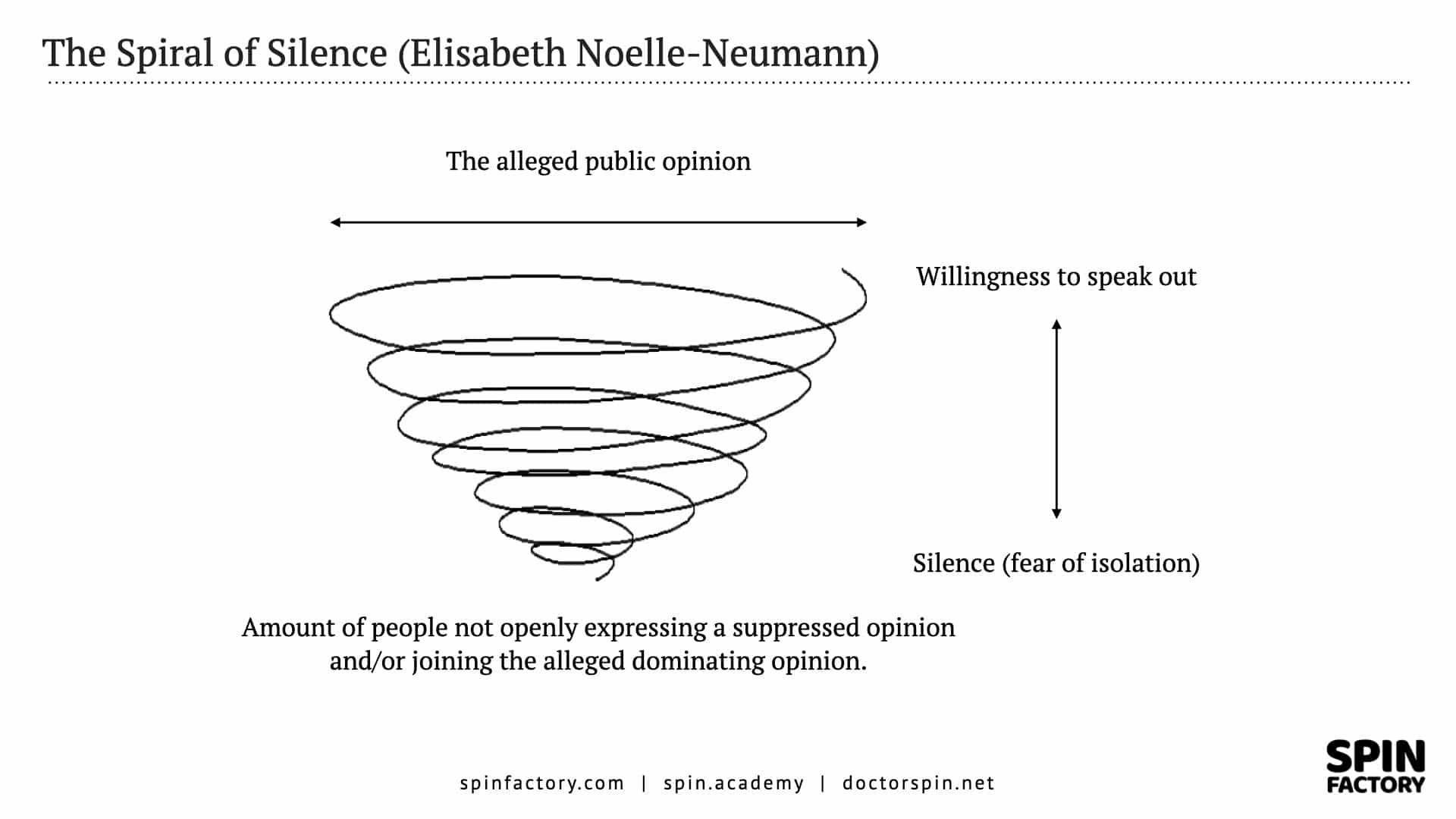How do you speak with social activists?
Local communities or activist groups have always spoken up when they see an organisation stepping over the line. Peaceful protests are vital signs of healthy democracies.
As a PR professional, I’ve helped many organisations deal with angry publics. It’s a perfectly natural part of our job description.
But lately, these attacks seem to have spiralled out of proportion.
In this blog post, I’ll discuss why social activists are becoming a larger and larger PR threat in today’s amplified media landscape — and how these social activists ought to be addressed.
Here we go:
Social Activists = PR Problems
There have always been groups of people who speak out against brands. However, social activists are becoming an even more severe PR problem that seems to be growing out of proportion.
But the playing field used to be more balanced. While organisations are typically strong, the traditional media logic has always favoured social activists as underdogs.
But when social media is combined with influential societal trends of political correctness, virtue signalling, woke capitalism, and postmodernist identity politics, social activists can grow their strength exponentially in hours.
And their attacks are often relentless and unbalanced. They use social media not as a platform for dialogue but as a tool for coercing organisations into compliance.
Where is this imbalance coming from?
Moral Slacktivism — Amplified
“Slacktivism (a portmanteau of slacker and activism) is the practice of supporting a political or social cause by means such as social media or online petitions, characterised as involving very little effort or commitment. Additional forms of slacktivism include engaging in online activities such as ‘liking,’ ‘sharing,’ or ‘tweeting’ about a cause on social media, signing an Internet petition, copying and pasting a status or message in support of the cause, sharing specific hashtags associated with the cause, or altering one’s profile photo or avatar on social network services to indicate solidarity.”
Source: Wikipedia 1Slacktivism. (2023, November 7). In Wikipedia. https://en.wikipedia.org/wiki/Slacktivism
“Why doesn’t your brand speak out against X?”
Anyone can tag a business on social media and hold it accountable for anything. And fellow online activists will quickly know how to tag along and whip up tensions.
Their authority stems from their professing moral superiority, which allows them to silence anyone who doesn’t share their political ideas. This is often referred to as “cancel culture.”
How To Navigate Cancel Culture
“Cancel culture or call-out culture is a phrase contemporary to the late 2010s and early 2020s used to refer to a form of ostracism in which someone is thrust out of social or professional circles — whether it be online, on social media, or in person. Those subject to this ostracism are said to have been ‘cancelled’.”
Source: Wikipedia 2Cancel culture. (2023, January 4). In Wikipedia. https://en.wikipedia.org/wiki/Cancel_culture
The culture war with de-platforming, cancel culture, online lynch mobs, woke journalism, populism, fake news, and moral slacktivism are fast becoming our biggest challenges as PR professionals.
“Cancel culture on social media is a form of public shaming that aims to diffuse public discourse and promote tolerance, but can also be viewed as a form of intolerance against opposing views.”
Source: Rupkatha Journal on Interdisciplinary Studies in Humanities 3Velasco, J. (2020). You are Cancelled: Virtual Collective Consciousness and the Emergence of Cancel Culture as Ideological Purging. Rupkatha Journal on Interdisciplinary Studies in Humanities, 12. … Continue reading
Focus On What Truly Matters
Here’s how to navigate cancel culture as an organisation:
Learn more: Cancel Culture is Evil
De-platforming: An Anti-Democratic Strategy
“Deplatforming of extreme Internet celebrities leads to increased use of Telegram and other alternative social media platforms, impacting both their reputation and critical social media research.”
Source: European Journal of Communication 4Rogers, R. (2020). Deplatforming: Following extreme Internet celebrities to Telegram and alternative social media. European Journal of Communication, 35, 213 — 229. … Continue reading
“College campuses have long grappled with the question of allowing controversial speakers on campus, but recent years have seen increasingly divisive public figures invited and disinvited, with being “deplatformed” becoming a badge of honor for these public figures.”
Source: Journal of Intellectual Freedom & Privacy 5McDowall, M. (2019). Hate Speech on Campus: Reframing the Discourse. Journal of Intellectual Freedom & Privacy. https://doi.org/10.5860/JIFP.V4I1.6906
Rather than proposing dialogue or debate, online activists tend to gravitate toward making severe threats, demanding total conformity, and organising efforts to smear or deplatform the brand and its spokespeople.
From a PR perspective, social activists seem to resort to increasingly more anti-democratic measures to coerce brands into total obedience.
“Deplatforming, also known as no-platforming, has been defined as an ‘attempt to boycott a group or individual through removing the platforms (such as speaking venues or websites) used to share information or ideas, or ‘the action or practice of preventing someone holding views regarded as unacceptable or offensive from contributing to a forum or debate, especially by blocking them on a particular website’.”
Source: Wikipedia 6Deplatforming. (2023, January 8). In Wikipedia. https://en.wikipedia.org/wiki/Deplatforming
The Spiral of Silence Theory
Elisabeth Noelle-Neumann’s (1916 – 2010) well-documented theory on the spiral of silence (1974) explains why the fear of isolation due to peer exclusion will pressure publics to silence their opinions.

The theory was developed in the late 1970s in West Germany, partly in response to Noelle-Neumann’s observations of how public opinion seemed to shift during the Nazi régime and post-war Germany.
The spiral of silence theory is based on the idea that people fear social isolation. This fear influences their willingness to express their opinions, especially if they believe these opinions are in the minority.
Rather than risking social isolation, many choose silence over expressing their opinions.
As the dominant coalition stands unopposed, they push the confines of what’s acceptable down a narrower and narrower funnel, the so-called opinion corridor). 7Opinion corridor. (2023, April 8). In Wikipedia. https://en.wikipedia.org/wiki/Opinion_corridor
Noelle-Neumann emphasised the media’s role in shaping public perception of what opinions are dominant or popular, thus influencing the spiral of silence.
Populism and Cancel Culture
The mechanisms behind Elisabeth Noelle Neumann’s spiral of silence theory could fuel destructive societal phenomena like populism and cancel culture:
In both cases, the spiral of silence contributes to a polarised environment. Views become dominant not necessarily because they are more popular but because opposing views are not expressed due to fear of social isolation or repercussions.
Learn more: The Spiral of Silence
Freedom of Speech is a Two-Way Street
In a democracy, all organisations must be open to criticism — however unpleasant or unsubstantiated.
Freedom of speech is a pillar of PR as well. Whenever the management of an organisation is under heavy fire and they’re trying to hide, escape, or deflect, the PR function is there to promote transparency and public action.
PR has this function, not due to moral high ground but because promoting openness in adversity is good for business. If an organisation fails to adapt to negative feedback, the problems don’t disappear. Hence, openness is necessary for survival.
However, the basic principles of freedom of speech also apply to social activists. Self-proclaimed moral superiority shouldn’t justify anti-democratic and disproportional attacks on organisations.
But sometimes, it seems that it does.
Too Woke — or Not Woke Enough
With CSR issues becoming increasingly important, brands must find strategies to deal with social activists.
Arik C. Hanson, the PR blogger, writes:
“[…] we’ve seen numerous reports from vendors and agencies like Edelman telling us 1 in every 2 customers is a ‘belief-driven buyer.’ And, of those buyers, 65% will not buy from a brand because they stayed silent on an issue it had an obligation to address.”
So, how do we navigate the jungle of moral issues?
A common brand strategy, albeit insignificant, is to wait and see which issues become pressing enough to warrant action.
At best, such a strategy is opportunistic and callous. If you choose this route, the media will expose your brand to accusations of piggybacking on the social agenda. Being too woke is just as bad as not being woke enough.
It backfired when Gillette came out in front of ongoing gender discussions by shaming themselves and their customer base for being perpetrators of toxic masculinity.
I wouldn’t recommend brands make it their business to inform adults how they should live their lives. I would recommend more focused CSR activities instead.
Opting to score points by going for the moral high ground is risky. Opting to please social activists while disregarding the business strategy is madness.
Moral Pragmatism: Diversity of Ideas
Social reforms are complex by nature.
Whilst both the news media and the social algorithms are preferential to portraying conflicts as having only two polar opposite sides, the reality of social change is better understood as a spectrum.
A brand could be super progressive by design, but it must remember that its coworkers might have various political persuasions. Diversity is good — also when it comes to political ideas.
Should brands sit down every morning to review all potential social issues and ask, “Where do we stand on this particular issue?” Should a social policy team spend days drafting possible responses while continuously updating a growing library of documents?
Well, maybe they should. But for most brands, this type of setup would be financially impossible. Irresponsible, even.
There must be a way, right?
Teaching Brands to Speak Human
“How hard can it be to stand up against injustice?” someone might ask.
As humans, we’ve evolved to communicate with each other, not with abstractions. This is why we tend to humanise brands, to think of a brand as a living entity with a mind of its own. In public relations, we humanise brands for this exact reason.
But while an organisation is not “human” in any sense, it must still be taught to impersonate a human being.
And make no mistake about it:
Getting an organisation to “speak human” with many unique individuals is challenging.
So, how should a community manager respond to social activists online?
The Stoic Tonality
An organisation is the polyphonic sum of all its coworkers. Imagine extracting each coworker’s most virtuous and mature traits and combining them into one voice — the Stoic tonality.
Stoic Tonality Examples
“Why doesn’t your brand speak out against industrial overfishing killing our oceans?”
“As a company that sells fishing gear, we want our oceans — and all animals and plants living in them! — to be healthy and plentiful. We, too, were disturbed by the recent news of overfishing. How could anyone not be? We now ask ourselves, how can our company make more of a difference? Honestly, we’re discussing our strategy for sustainability every day. I cannot say how or when we might take specific action regarding this latest news, but rest assured that we’re taking the general issue of saving our oceans seriously.”
“Why doesn’t your brand engage in Black Lives Matter?”
“As for right now, we’re listening. We’re listening to the stories being told. We’re listening to understand better how we can learn and grow as a company. As for inclusiveness and human rights in general, we think we’re doing a great job, and part of that is to stay open and carefully listen to people’s stories. We might take specific actions, but we’re listening and learning.”
“Why doesn’t your brand join our protests against toxic masculinity and the patriarchy?”
“Honestly, we’re a product company. We make products for anyone who likes them. And I dare say that we’re experts in making these products. However, we’re not experts on ideologies or societal structures. So, for now, we listen. And we continue to focus on making the best products that we can. For everyone. We believe that’s our best way of contributing at this point.”
“Why doesn’t your brand sign our petition to boycott all companies on our Environmental Black List?”
“As a company, we operate differently. Instead of signing petitions or participating in other public demonstrations, we take action within our sphere of influence. And I dare say that our many environmental initiatives are making a lot of difference worldwide relative to our size and reach. If we were to sign your petition, we would first have to use our resources to research the legitimacy of its creators and then make sure that none of the companies on that list is being wrongfully accused. While it would be possible, we’ve decided that we can do more good by directing our resources to where we can make the most difference.”
“Why doesn’t your company act against your female employees who take time off for abortions?”
“All our employees are grown-ups, and what they do on their own time is frankly none of our business. We’re a large company, and we have employees who are pro-life and pro-choice. We believe we have a workplace where people can have different opinions but still respect each other and work well together.”
“Why hasn’t your company offered your thoughts and prayers for the victims and their families of the school shooting?”
“The victims and their families have our empathies, of course. I speak for everyone working at our company when I say we were devastated by the news as everyone else. But you’re right that we haven’t posted any status updates about the shooting on our Facebook page. It’s not that we don’t care (we do!), it’s just that we focus our updates on our products and services and how they make a positive difference in the world.”
Learn more: The Stoic Tonality

THANKS FOR READING.
Need PR help? Hire me here.

Annotations
| 1 | Slacktivism. (2023, November 7). In Wikipedia. https://en.wikipedia.org/wiki/Slacktivism |
|---|---|
| 2 | Cancel culture. (2023, January 4). In Wikipedia. https://en.wikipedia.org/wiki/Cancel_culture |
| 3 | Velasco, J. (2020). You are Cancelled: Virtual Collective Consciousness and the Emergence of Cancel Culture as Ideological Purging. Rupkatha Journal on Interdisciplinary Studies in Humanities, 12. https://doi.org/10.21659/rupkatha.v12n5.rioc1s21n2 |
| 4 | Rogers, R. (2020). Deplatforming: Following extreme Internet celebrities to Telegram and alternative social media. European Journal of Communication, 35, 213 — 229. https://doi.org/10.1177/0267323120922066 |
| 5 | McDowall, M. (2019). Hate Speech on Campus: Reframing the Discourse. Journal of Intellectual Freedom & Privacy. https://doi.org/10.5860/JIFP.V4I1.6906 |
| 6 | Deplatforming. (2023, January 8). In Wikipedia. https://en.wikipedia.org/wiki/Deplatforming |
| 7 | Opinion corridor. (2023, April 8). In Wikipedia. https://en.wikipedia.org/wiki/Opinion_corridor |
| 8 | Silfwer, J. (2018, August 6). How To Fight Populism. Doctor Spin | The PR Blog. https://doctorspin.net/how-to-fight-populism/ |
| 9 | Silfwer, J. (2020, August 24). Cancel Culture is Evil. Doctor Spin | The PR Blog. https://doctorspin.net/cancel-culture/ |



